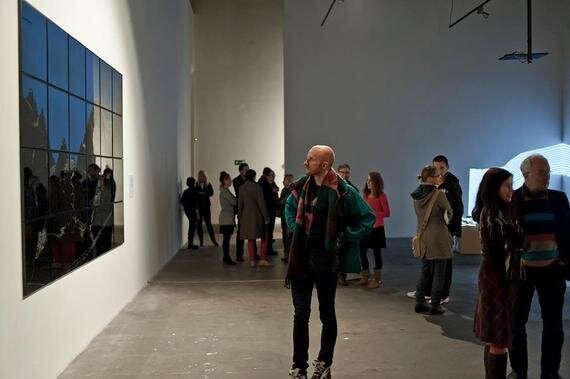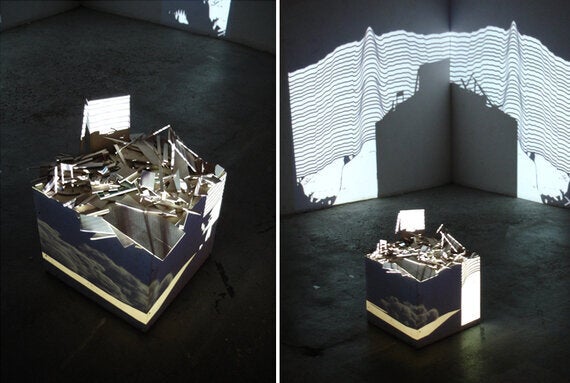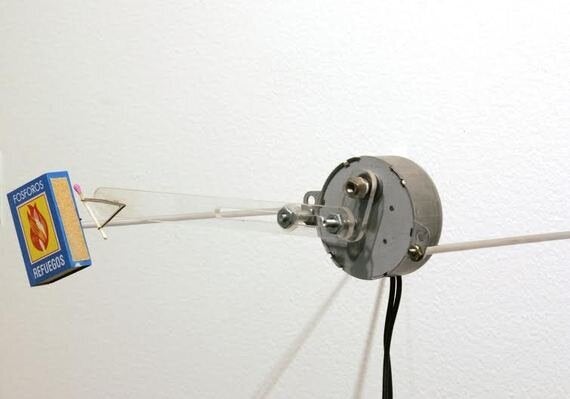Bogota: A City on the Edge is part of the Cities on the Edge exciting and successful art project in which areas that are on the edge are presented to an international audience. It is taking place at the Laznia Centre for Contemporary Art in Gdansk, Poland, co-curated by Sylwia Krason and John Angel Rodriguez and managed by Agnieszka Kulazinska, the centre chief curator.

Opening of the exhibition Bogota. City on the Edge, CSW Laznia, Gdansk, photo Pawel Jozwiak, courtesy Laznia, Nov 2013.
The exhibition presents Bogota city through the artists' eyes, which gaze focuses on their experience living and working in the capital of the country. Bogota has emerged in the last decade as a one of the megacities in Latin America with the highest development and growth index, characterised by a multicultural complexity coexisting with enormous problems of social gaps and security. The history of the country, as well as the social and family lives have implicit the long period of violence, the drug mafia presence, and the corrupted political ambiance, that still remain as unsolved problems. The exhibition is an attempt to understand how this melting pot produces this disseminated and boiling artistic dynamics.
When I asked Sylwia Krason, the co-curator and initiator of the show, what it is the reason to exhibit art by Colombian artists in Poland, she says that:
"The presentation of art from other continents happens in Poland rarely. This type of exhibition enables the audience to learn more about culture and current social and political contexts of cities placed so far away and so called "on edges" of the world. This exhibition is an outcome of my personal interest in intercultural exchange and collaboration. I co-founded an art platform Contemporary Lynx that promotes Polish contemporary art around the world".
Adriana Salazar concentrates on exploring the boundaries between nature and things that are artificial. On the basis of her observations she creates kinetic art objects, which carry out various unpractical, often absurd activities: a machine that smokes cigarettes, a machine-object trying to thread a needle, a machine that cries. The artist is interested in the issues revolving around depicting behaviours and gestures typical of human beings, but made without their participation. Her art is an attempt to focus our attention on the absurdities of our everyday lives.

Alberto Lezaca de Paz, Estados de simulacion / State of Simulation, site-specific installation, wood, Plexiglas and video, 2011, photo courtesy of artist.
Multimedia installation Estados de Simulación / State of Simulation made by Alberto Lezaca de Paz pertains to the issue of modernising the city infrastructure of Bogota. The city is undergoing constant renovation. However, the all-powerful corruption within the state institutions successfully delays the completion of these urban projects. In consequence, urban landscape is an outcome of various styles, resulting in an absurd final effect.
Project Paisajes de Polvo / Landscapes out of Dust by Jaime Avila consists of a series of drawings which show a bird's-eye view of night scenery. The lines - subtly marked with ink and highlighted by points of light, meander among high mountain ranges. The artist only seemingly invites us to admire the night panorama of the Andes. This romantic nocturne is in fact a view at highways illegally constructed by drug smugglers, highways in areas which are explosive regions, dangerous and completely isolated from the rest of the world.
Mould / Plesn is a mural, by Andres Londoño, which shows the portraits of the most influential representatives of Columbian art world. However, it is not a tribute paid to Columbian curators, collectors and celebrities of the art world. The whole leaves the impression of a damp and mouldy cellar.
Cities on the Edge, a project run and curated by Agnieszka Kulazinska at the Laznia Centre for Contemporary Art since 2008 and partly funded by the Polish Ministry of Culture, aims at initiating debate and exchange of experiences. Its concept is in line with the broader dialogue between local and global ideas. As Kulazinska says:
"We are living now in a shrinking world, an IT global village with a very strong unification trend. Contemporary city spaces are alike. We have the very same multinationals, billboards and commercial advertisements. What is different and what is common among the six cities? Each of them has different experience and can tell a different story of its tradition and culture. Cities on the Edge are cities on the outskirts, outside centres, with port history, oriented more outside than within their own countries. The ambition of the Cities on the Edge project is to reverse their roles. The outside locations are to become locations in the centre, are to be windows enabling better insight into a culture or nation.We presented artists from Cuba, Palestine, Colombia. We plan to show artists from Chile and Ecuador".

Adriana Salazar, Daring Machines, kinetic installation, 2008, photo courtesy of artist.